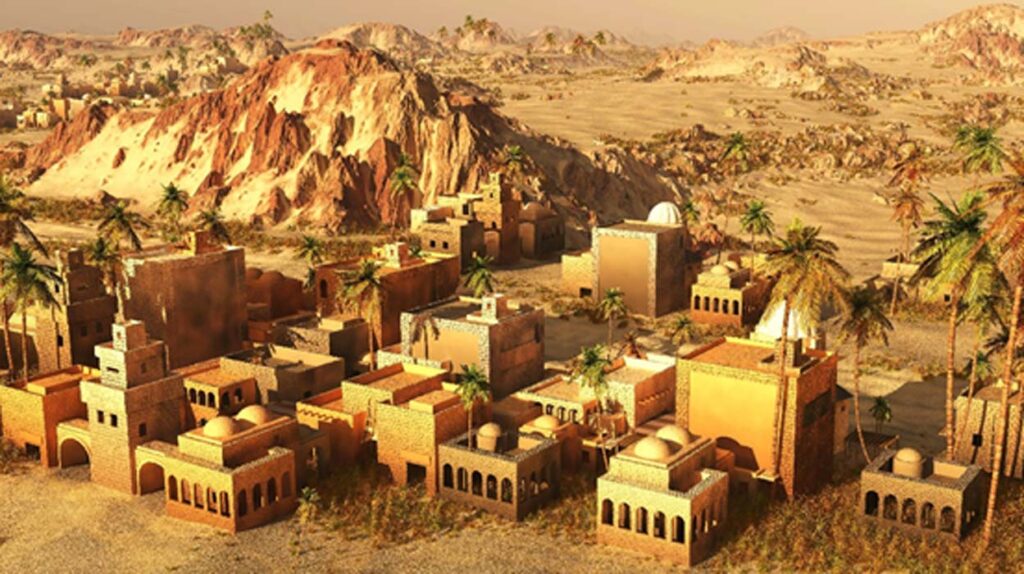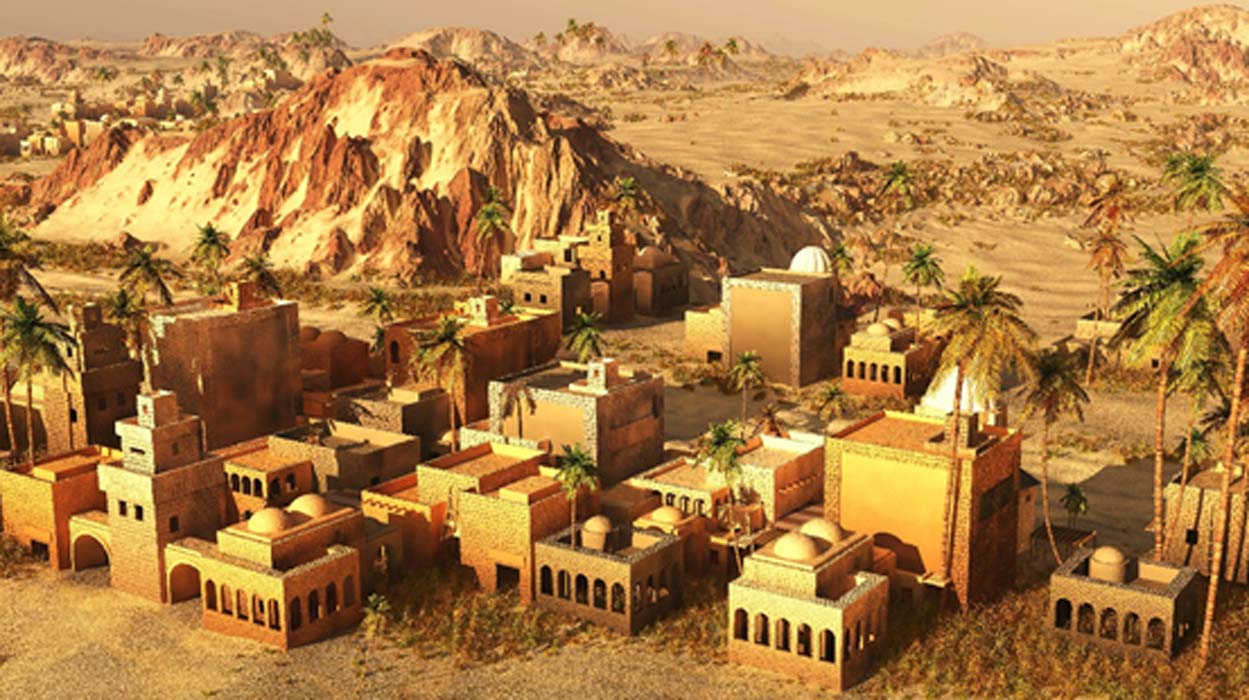
Where Are Ancient Cities Found? Unearthing the Secrets of Lost Civilizations
The allure of ancient cities, remnants of bygone eras, captivates historians, archaeologists, and curious minds alike. The question, “Where are ancient cities found?” is deceptively simple, yet the answer unveils a complex tapestry of geographical, environmental, and historical factors. These lost metropolises aren’t randomly scattered across the globe; their locations were strategically chosen to optimize resources, trade routes, and defense. Understanding the patterns of their placement offers profound insights into the rise and fall of civilizations. Let’s delve into the fascinating world of ancient city locations and explore the reasons behind their placement.
Key Factors Influencing Ancient City Locations
Several key factors consistently influenced the location of ancient cities. These include access to water, fertile land, defensible terrain, and trade routes. Understanding these elements helps us pinpoint potential areas where ancient cities are found.
Water Sources: The Lifeblood of Ancient Cities
Water is arguably the most crucial element for any settlement, and ancient cities were no exception. Proximity to rivers, lakes, or reliable springs was paramount. Consider the Nile River’s importance to ancient Egypt, with cities like Thebes and Memphis flourishing along its banks. Mesopotamia, the “land between the rivers” (Tigris and Euphrates), saw the rise of Ur, Babylon, and Nineveh. The Indus Valley Civilization thrived around the Indus River. These examples illustrate the direct correlation between water availability and urban development. Without a consistent water supply, sustaining a large population was impossible. The ability to irrigate crops, provide drinking water, and facilitate transportation made rivers invaluable. Even cities located further inland often relied on sophisticated aqueducts and wells to secure their water needs. [See also: Ancient Water Management Techniques]
Fertile Land for Agriculture
A stable food supply was essential for supporting a growing population. Ancient cities typically emerged in regions with fertile land suitable for agriculture. River valleys, with their rich alluvial soils, were particularly attractive. The Yellow River in China supported the development of early Chinese cities, while the fertile crescent in the Middle East witnessed the birth of agriculture and the rise of numerous urban centers. The availability of fertile land not only provided sustenance but also allowed for surplus production, which could be traded for other essential resources. This surplus also freed up individuals to pursue specialized crafts and professions, contributing to the diversification and complexity of urban life. The Maya civilization, for instance, developed sophisticated agricultural techniques, including terracing and raised fields, to maximize food production in the challenging tropical environment, allowing cities like Tikal and Palenque to flourish. Locating where ancient cities are found often means looking for areas once known for agricultural productivity.
Defensible Terrain: Protecting the City
Security was a major concern in the ancient world. Cities were often built on or near hills, mountains, or peninsulas that offered natural defenses against invaders. Acropolis in Athens, perched atop a rocky hill, provided a commanding view of the surrounding area and served as a refuge during times of war. Machu Picchu, nestled high in the Andes Mountains, was strategically located to be difficult to access and defend. Coastal cities often benefited from natural harbors that provided shelter for ships and facilitated trade while also offering a degree of protection from naval attacks. The presence of natural barriers, such as deserts or dense forests, could also deter potential invaders. The choice of a defensible location often outweighed other considerations, even if it meant sacrificing access to resources or trade routes. Fortifications, such as walls and moats, were also commonly constructed to enhance the city’s defenses. Understanding these defensive considerations is crucial when considering where ancient cities are found.
Trade Routes: Connecting the World
Trade played a vital role in the growth and prosperity of ancient cities. Cities located along major trade routes, whether land-based or maritime, had access to a wider range of goods and resources. The Silk Road, for example, facilitated the exchange of goods between East and West, leading to the growth of cities like Samarkand and Dunhuang. Coastal cities like Tyre and Sidon in Phoenicia became major trading centers due to their strategic location on the Mediterranean Sea. The ability to control or influence trade routes often translated into political and economic power. Cities that could effectively manage and protect trade routes attracted merchants and artisans, further stimulating economic growth. The exchange of ideas and cultural influences also occurred along these routes, contributing to the cosmopolitan character of many ancient cities. When considering where ancient cities are found, the intersection of trade routes is a key indicator. [See also: The Impact of Trade on Ancient Civilizations]
Geographical Regions Where Ancient Cities are Commonly Found
Considering the factors above, some geographical regions are more likely to harbor ancient city ruins than others. These regions often shared characteristics that were conducive to early urban development.
The Fertile Crescent: The Cradle of Civilization
The Fertile Crescent, encompassing parts of modern-day Iraq, Syria, Turkey, and Iran, is often referred to as the “cradle of civilization.” This region witnessed the development of agriculture, writing, and urban life. Cities like Jericho, one of the oldest continuously inhabited cities in the world, and Uruk, considered by many to be the first true city, flourished in this region. The Tigris and Euphrates rivers provided abundant water for irrigation, while the fertile soil supported intensive agriculture. The Fertile Crescent was also a crossroads of trade routes, connecting East and West. The concentration of ancient cities in this region reflects the favorable environmental and geographical conditions that facilitated early urban development. The search for where ancient cities are found frequently begins in the Fertile Crescent.
The Mediterranean Basin: A Hub of Ancient Civilizations
The Mediterranean Basin, encompassing the lands surrounding the Mediterranean Sea, was home to numerous ancient civilizations, including the Greeks, Romans, Phoenicians, and Egyptians. The sea facilitated trade and communication, while the mild climate and fertile soil supported agriculture. Cities like Athens, Rome, Carthage, and Alexandria became major centers of power, culture, and commerce. The Mediterranean Basin was also a melting pot of ideas and influences, contributing to the development of diverse and sophisticated societies. The legacy of these ancient civilizations is still visible today in the ruins of their cities, which dot the landscape from Spain to Egypt. Exploring where ancient cities are found in the Mediterranean is like stepping back in time to witness the grandeur of these empires.
The Indus Valley: A Lost Civilization Re-emerges
The Indus Valley Civilization, which flourished in present-day Pakistan and northwest India, was one of the earliest urban societies in the world. Cities like Mohenjo-daro and Harappa were characterized by their sophisticated urban planning, including well-organized street grids, advanced drainage systems, and standardized brick construction. The Indus River provided water for irrigation, while the fertile land supported agriculture. The Indus Valley Civilization also engaged in extensive trade with Mesopotamia and other regions. The decline of this civilization remains a mystery, but the ruins of its cities offer valuable insights into the history of urban development. The quest to discover where ancient cities are found has led to the rediscovery of this fascinating culture.
Mesoamerica: Ancient Cities in the Jungle
Mesoamerica, encompassing parts of modern-day Mexico and Central America, was home to several ancient civilizations, including the Maya, Aztec, and Olmec. These civilizations developed complex societies, advanced mathematics and astronomy, and impressive architectural achievements. Cities like Teotihuacan, Tikal, and Palenque were major centers of power, religion, and culture. The Maya civilization, in particular, built elaborate cities in the rainforests of the Yucatan Peninsula, showcasing their ingenuity and adaptability. The ruins of these cities, often hidden beneath dense vegetation, continue to fascinate archaeologists and historians. Figuring out where ancient cities are found in Mesoamerica often requires navigating challenging terrain and deciphering complex hieroglyphs.
Modern Techniques for Locating Ancient Cities
Archaeologists today employ a variety of advanced techniques to locate and study ancient cities. These techniques include remote sensing, geophysical surveys, and aerial photography.
Remote Sensing: Seeing Through the Earth
Remote sensing techniques, such as satellite imagery and LiDAR (Light Detection and Ranging), allow archaeologists to identify potential sites from a distance. Satellite imagery can reveal subtle variations in vegetation or soil that may indicate the presence of buried structures. LiDAR, which uses laser pulses to create detailed three-dimensional maps of the terrain, can penetrate dense vegetation and reveal hidden features, such as ancient roads or building foundations. These techniques are particularly useful for surveying large areas quickly and efficiently. Remote sensing helps narrow down the search area, making it easier to focus on specific locations where ancient cities are found.
Geophysical Surveys: Probing the Subsurface
Geophysical surveys use various methods to detect subsurface features without excavation. Ground-penetrating radar (GPR) sends radio waves into the ground and measures the reflections, revealing buried structures, walls, and other anomalies. Magnetometry measures variations in the Earth’s magnetic field, which can be caused by buried iron objects or fired clay. Electrical resistivity tomography (ERT) measures the electrical resistance of the soil, which can indicate the presence of buried structures or voids. These techniques provide valuable information about the layout and condition of buried sites before any digging takes place. Geophysical surveys are essential tools for pinpointing where ancient cities are found and understanding their internal structure.
Aerial Photography: An Eye in the Sky
Aerial photography, using drones or aircraft, provides a bird’s-eye view of archaeological sites. This perspective can reveal patterns and features that are not visible from the ground, such as crop marks, which are variations in crop growth caused by buried structures. Aerial photography can also be used to create detailed maps of sites and to monitor their condition over time. The use of drones has revolutionized aerial photography, making it more accessible and affordable. Aerial photography offers a valuable perspective on where ancient cities are found and how they relate to their surrounding landscape.
The Importance of Preserving Ancient Cities
Ancient cities are invaluable sources of information about the past. They offer insights into the lives, cultures, and technologies of our ancestors. Preserving these sites is essential for understanding our shared human heritage. Unfortunately, many ancient cities are threatened by development, looting, and environmental degradation. Conservation efforts are crucial to protect these sites for future generations. This includes implementing protective legislation, promoting sustainable tourism, and educating the public about the importance of cultural heritage. By understanding where ancient cities are found and the threats they face, we can work together to ensure their preservation.
In conclusion, the question of “Where are ancient cities found?” leads us to consider a multitude of factors, from access to water and fertile land to defensible terrain and trade routes. These cities are not just piles of stones; they are windows into the past, offering invaluable insights into the rise and fall of civilizations. By understanding the factors that influenced their location and employing modern techniques to locate and study them, we can unlock the secrets of these lost metropolises and preserve them for future generations.

